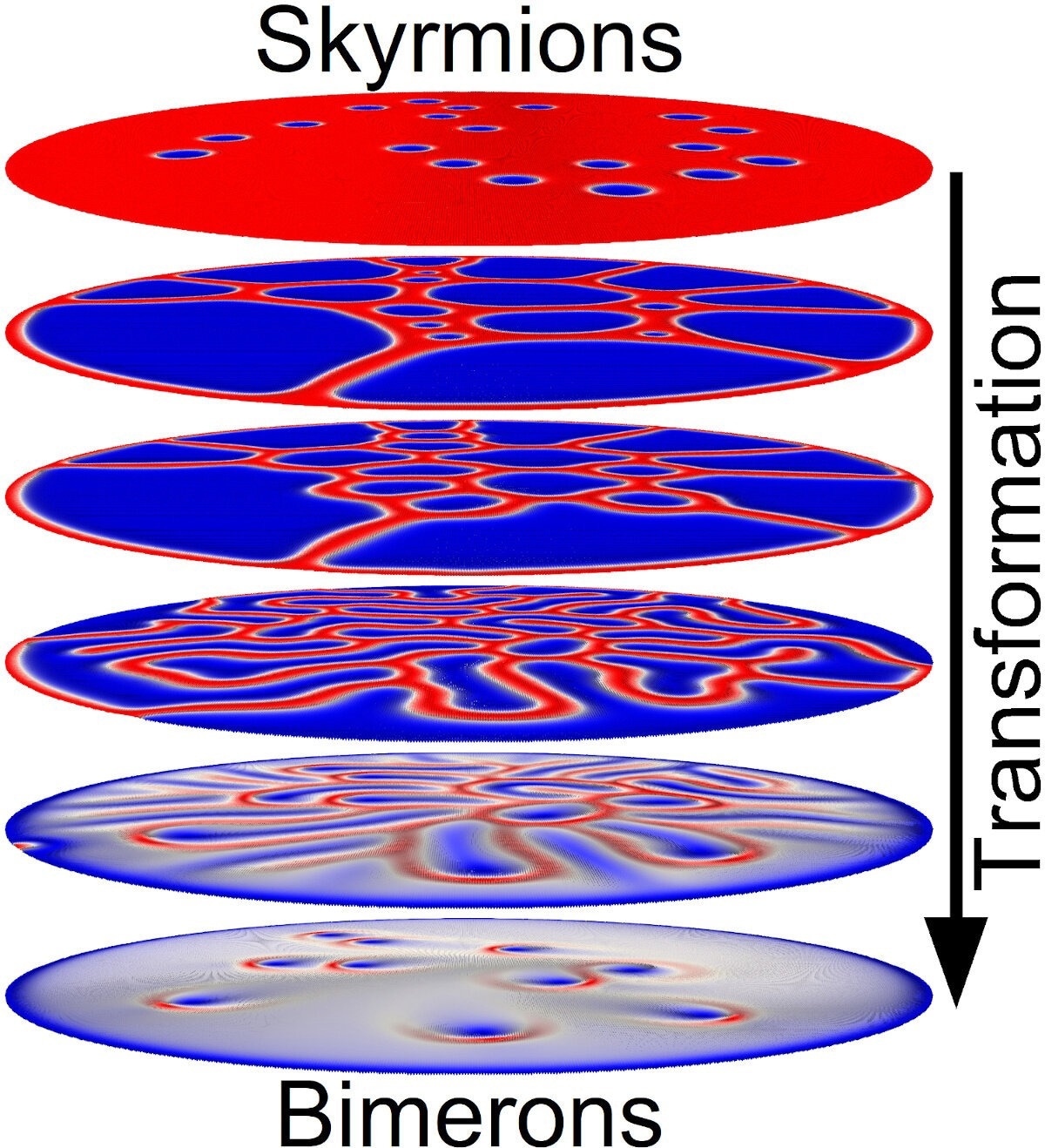Skyrmions and bimerons are fundamental topological spin textures in magnetic thin films with asymmetric exchange interactions, and they can be used as information carrier for next generation low energy consumption memory, advanced neuromorphic computing, and advanced quantum computing. They have multiple degrees of freedom that can carry information.
 The transformation from skyrmions to bimerons in a magnetic disk, where deformed skyrmion bubbles and chiral labyrinth domains are found as nontrivial intermediate transition states. The transformation is induced by the electric current-induced Oersted field and temperature-induced perpendicular magnetic anisotropy variation. Credit: Shinshu University
The transformation from skyrmions to bimerons in a magnetic disk, where deformed skyrmion bubbles and chiral labyrinth domains are found as nontrivial intermediate transition states. The transformation is induced by the electric current-induced Oersted field and temperature-induced perpendicular magnetic anisotropy variation. Credit: Shinshu University
The transformation between isolated skyrmions and bimerons will be an essential operation for future computing architecture based on multiple different topological bits. Therefore, it is important for the community to find effective ways to realize the creation, transformation, and manipulation of skyrmions and bimerons in magnetic materials.
In a recent study published in Nano Letters, the group led by Xiaoxi Liu demonstrate in experiments and simulations that the creation of isolated skyrmions and their subsequent transformation to bimerons are possible in a magnetic disk surrounded by a current-carrying and omega-shaped microcoil, where the electric current-induced Oersted field and temperature-induced perpendicular magnetic anisotropy variation play important roles in the transformation between skyrmions and bimerons.
Researchers find that the current injected into the microcoil can generate an Oersted field to switch the magnetization of the magnetic disk in the out-of-plane directions. Meanwhile, the current injected into the microcoil can heat the magnetic disk and results in the increase of the device temperature.
As a result, a temperature-induced decrease of magnetic anisotropy is realized in the magnetic disk, which leads to the magnetization reorientation from the out-of-plane direction to the in-plane direction and thus, fosters the transformation from skyrmions to bimerons. Researchers also find deformed skyrmion bubbles and chiral labyrinth domains during the transformation between skyrmions and bimerons.
The researchers' results demonstrate the possibility that two different types of topological spin textures can be hosted by a same magnetic film with asymmetric exchange interactions, which may provide guidelines for building novel spintronic applications based on different types of topological spin textures.
"Our experiment clarified for the first time the transformation between different topological spin textures," explains Liu. He also mentions, "Skyrmions and bimerons are two most important information carriers for next generation memory and advanced computing architectures. Our research has fundamental physical interest. It is also important for future data storage and computing community."
Researchers will try to study magnetic and spintronic device applications based on the transformation of different types of topological spin textures. An example is the voltage-gated spintronic devices based on skyrmions and bimerons. "Our ultimate goal is the application of topological spin textures for low energy consumption, high density memory and advanced neuromorphic computing," says Liu.